List of cities in the United Kingdom
This is a list of official cities in the United Kingdom as of 2015.[1] It lists those places that have been granted city status by letters patent or royal charter. There are currently a total of 69 such cities in the United Kingdom: 51 in England, seven in Scotland, six in Wales, and five in Northern Ireland.[1] Of these, 23 in England, two in Wales, and one in Northern Ireland possess Lord Mayors and four in Scotland have Lord Provosts. In some cases, the area holding city status does not coincide with the built up area or conurbation of which it forms part. In Greater London, for example, the City of London and that of Westminster each hold city status separately but no other neighbourhood has been granted city status, nor has Greater London as a whole. In other cases, such as the Cities of Canterbury and Lancaster, the status extends over a number of towns and rural areas outside the main settlement proper.[2]
History
The initial cities (Latin: civitas) of Britain were the fortified settlements organized by the Romans as the capitals of the Celtic tribes under Roman rule. The British clerics of the early Middle Ages later preserved a traditional list of the "28 Cities" (Old Welsh: cair) which was mentioned by Gildas[3] and listed by Nennius.[5]
The title of city was initially informal and, into the 20th century, royal charters were considered to recognize city status rather than to grant it.[6] The usual criterion in early modern Britain was the presence of a cathedral, particularly after King Henry VIII granted letters patent establishing six new cities when he established a series of new dioceses in the 1540s as part of the English Reformation.[8] No new cities were created between the 16th and 19th centuries, but following the Industrial Revolution and the accompanying population boom and growth in urbanisation, new sees were established at Ripon (1836) and Manchester (1847); their councils began to style them cities immediately. Inverness in Scotland was even refused a charter at the time of the Jubilee honours of 1897, in part because it would have drawn more attention to the other traditional "cities" still not formally chartered as such.[2]
Beginning in the mid-19th century, however, the process became more formal. A visit by Queen Victoria in 1851 prompted Manchester to petition Parliament for recognition of its status. Ripon followed in the 1860s, and a series of hitherto informal "cities" were formally recognized in the 1880s and 1890s. On the basis of its size, importance, and regular government, Belfast was elevated in spite of its lack of a cathedral in 1888; other large municipalities followed, while smaller applicants began to be rejected. King Edward VII and the Home Office established three criteria for future applicants in 1907—a minimum population of 300 000, a good record of local government, and a "local metropolitan character"[2]—but these criteria were not made public, and following Leicester's successful elevation in 1919 a series of exceptions were made. The 1972 Local Government Act effectively eliminated all authorities holding city status outside London on 1 April 1974; most of their replacements were confirmed in their predecessor's status—even in cases such as the City of Carlisle, where much of the local authority area is undeveloped countryside—but the Borough of Medway was not permitted to continue Rochester's title. In recent times there have been competitions for new grants of city status. Towns or councils that claim city status or add "city" to their name have been known to be rebuked by the Advertising Standards Authority.[9]
The cities of Scotland and Ireland were treated separately. Scottish towns irregularly applied the description to themselves, but were formally organized as royal burghs; the special rights of these were preserved by Article XXI of the Treaty of Union which established the single state of Great Britain in 1707.[10] Edinburgh and Glasgow were confirmed as cities "by ancient usage" in the 18th century,[11] as was Aberdeen, and this was later reconfirmed in the Act enlarging the burgh in 1891. Dundee was granted letters patent in 1889 and Elgin and Perth were recognized as cities by the Home Office in 1972, before the privilege was removed by the Scottish Local Government Act of 1973.[12]
In Ireland, only the seat of the primate at Armagh was accorded city status by ancient usage, and this status was abolished by the Irish Municipal Corporations Act of 1840. All other cities have been those explicitly recognized as such.
List of cities
| City[1] | Year granted or confirmed |
Cathedral (pre-1888) |
City council | Nation/Region | Image | Population |
|---|---|---|---|---|---|---|
| Aberdeen32 (Scots: Aiberdeen) (Scottish Gaelic: Obar Dheathain) |
189131 (Burgh: 1179) |
High Kirk of Aberdeen (St Machar's) |
Local government district | Scotland |  |
189,12038 |
| Armagh11 (Irish: Ard Mhacha) (Ulster-Scots: Airmagh) |
1994 | not applicable | Local government district | Northern Ireland |  |
59,340 (2011)[13] |
| Bangor1 | time immemorial | Cathedral Church of St Deiniol | Community | Wales |  |
16,358 (2011)[14] |
| Bath1 | 1090 | Abbey Church of SS Peter & Paul4 |
Charter trustees | South West, England | 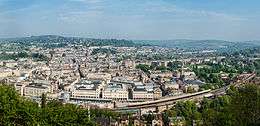 |
88,859 (2011)[15] 97,311 (urban area, 2010)[16] |
| Belfast (Irish: Béal Feirste) (Ulster-Scots: Bilfawst) |
1888 | not applicable | Local government district | Northern Ireland | 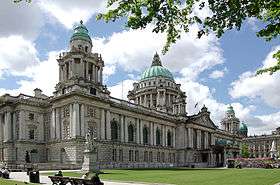 |
333,871 (2011)[17] |
| Birmingham2 | 188933 | not applicable | Local government district (Metropolitan borough) |
West Midlands, England |  |
1,092,330 (2013)[18] |
| Bradford1 | 1897 | not applicable | Local government district (Metropolitan borough) |
Yorkshire and the Humber, England |  |
522,452 (2011)[19] |
| Brighton & Hove15 | 2000 | not applicable | Local government district (Unitary) |
South East, England | |
273,369 (2011)[19] |
| Bristol1 | 1542 | Cathedral Church of the Holy & Undivided Trinity |
Local government district (Unitary and county) |
South West, England |  |
428,234 (2011)[19] |
| Cambridge3 | 195125 | not applicable | Local government district | East, England |  |
123,867 (2011)[19] |
| Canterbury3 | time immemorial | Cathedral & Metropolitical Church of Christ |
Local government district (Non-metropolitan borough) |
South East, England |  |
151,145 (2011)[19] |
| Cardiff9 (Welsh: Caerdydd) |
190529 | not applicable | Local government district | Wales |  |
346,090 (2011)[19] |
| Carlisle1 | 1133 | Cathedral Church of the Holy & Undivided Trinity |
Local government district | North West, England |  |
107,524 (2011)[19] |
| Chelmsford37 | 2012 | not applicable | Local government district (Non-metropolitan borough) |
East, England |  |
168,310 (2011)[19] |
| Chester3 | 1541 | Cathedral Church of Christ & the Blessed Virgin Mary |
Charter trustees‡ | North West, England |  |
91,733 (urban area, 2010)[16] |
| Chichester1 | 1075 | Cathedral Church of the Holy Trinity |
Civil parish | South East, England |  |
26,795 (2011)[20] |
| Coventry1 | 1102 | St Michael's Cathedral5 | Local government district (Metropolitan borough) |
West Midlands, England | |
316,915 (2011)[19] |
| Derby13 | 1977 | not applicable | Local government district (Unitary) |
East Midlands, England |  |
248,752 (2011)[19] |
| Derry 39 (Irish: Doire) (Ulster-Scots: Derrie) |
1604[21] | not applicable | Local government district | Northern Ireland | |
107,877 (2011)[13] |
| Dundee32 (Scottish Gaelic: Dùn Dèagh) |
188930 (Burgh: 1191) |
not applicable | Local government district | Scotland |  |
153,99038 |
| Durham1 | time immemorial | Cathedral Church of Christ & St. Mary the Virgin |
Charter trustees‡ | North East, England |  |
94,375 (2011)[22] |
| Edinburgh32 (Scottish Gaelic: Dùn Èideann) |
18th century[11] (Burgh: 1329) |
High Kirk of Edinburgh (St Giles's) |
Local government district | Scotland | |
468,72038 |
| Ely1 | 1109 | Cathedral Church of the Holy & Undivided Trinity |
Civil parish | East, England |  |
20,256 (2011)[23] |
| Exeter1 | time immemorial | Cathedral Church of St Peter |
Local government district | South West, England |  |
117,773 (2011)[19] |
| Glasgow32 (Scots: Glesga) (Scottish Gaelic: Glaschu) |
18th century[11] (Burgh: 1492) |
High Kirk of Glasgow (St Mungo's) |
Local government district | Scotland | _Buchannan_Street%2C_Glasgow.jpg) |
589,90038 |
| Gloucester1 | 1541 | Cathedral Church of St Peter & the Holy and Indivisible Trinity |
Local government district | South West, England | 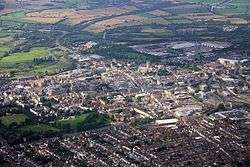 |
121,688 (2011)[19] |
| Hereford119 | time immemorial | Cathedral Church of SS Mary the Virgin & Ethelbert the King |
Civil parish | West Midlands, England | |
58,896 (2011)[24] |
| Inverness (Scottish Gaelic: Inbhir Nis) |
2000 | not applicable | none | Scotland |  |
57,960[25] |
| Kingston upon Hull12 | 1897 | not applicable | Local government district (Unitary) |
Yorkshire and the Humber, England |  |
256,406 (2011)[19] |
| Lancaster1 | 193726 | not applicable | Local government district | North West, England | .jpg) |
138,375 (2011)[19] |
| Leeds1 | 1893 | not applicable | Local government district (Metropolitan borough) |
Yorkshire and the Humber, England |  |
751,485 (2011)[19] |
| Leicester1 | 191922 | not applicable | Local government district (Unitary) |
East Midlands, England |  |
329,839 (2011)[19] |
| Lichfield17 | time immemorial | Cathedral Church of SS Mary & Chad |
Civil parish | West Midlands, England |  |
32,219 (2011)[26] |
| Lincoln3 | 1072 | Cathedral Church of St Mary |
Local government district (Non-metropolitan borough) |
East Midlands, England |  |
93,541 (2011)[19] |
| Lisburn (Irish: Lios na gCearrbhach) |
2002 | not applicable | Local government district | Northern Ireland |  |
120,165 (2011)[13] |
| Liverpool2 | 1880 | Cathedral Church of Christ |
Local government district (Metropolitan borough) |
North West, England |  |
466,415 (2011)[19] |
| City of London6 | time immemorial | Cathedral Church of St Paul |
Local government district (sui generis and county) |
London |  |
7,375 (2011)[19] |
| Manchester1 | 185334 | Cathedral & Collegiate Church of St Mary, St Denys, & St George |
Local government district (Metropolitan borough) |
North West, England |  |
503,127 (2011)[19] |
| Newcastle upon Tyne1 | 1882 | Cathedral Church of St Nicholas |
Local government district (Metropolitan borough) |
North East, England |  |
280,177 (2011)[19] |
| Newport14 (Casnewydd) |
2002 | not applicable | Local government district | Wales |  |
145,736 (2011)[19] |
| Newry (Irish: Iúr Cinn Trá) (Ulster-Scots: Newrie) |
2002 | not applicable | none | Northern Ireland |  |
29,946 (2008, settlement population)[27] |
| Norwich1 | 1094 | Cathedral Church of the Holy & Undivided Trinity |
Local government district | East, England |  |
132,512 (2011)[19] |
| Nottingham1 | 1897 | not applicable | Local government district (Unitary) |
East Midlands, England |  |
305,680 (2011)[19] |
| Oxford1 | 1542 | Cathedral Church of Christ |
Local government district | South East, England |  |
151,906 (2011)[19] |
| Perth (Scots: Pairth) (Scottish Gaelic: Peairt) |
2012[28] (Burgh: 12th century)[29] |
not applicable | none | Scotland |  |
45,77038 |
| Peterborough2 | 1541 | Cathedral Church of St Peter, St Paul, & St Andrew |
Local government district (Unitary) |
East, England |  |
183,631 (2011)[19] |
| Plymouth1 | 192827 | not applicable | Local government district (Unitary) |
South West, England |  |
256,384 (2011)[19] |
| Portsmouth1 | 192624 | not applicable | Local government district (Unitary) |
South East, England |  |
205,056 (2011)[19] |
| Preston14 | 2002 | not applicable | Local government district | North West, England |  |
140,202 (2011)[19] |
| Ripon1 | 1836 | Cathedral Church of SS Peter & Wilfrid |
Civil parish | Yorkshire and the Humber, England |  |
16,702 (2011)[31] |
| St Albans7 | 187736 | Cathedral & Abbey Church of St Alban |
Local government district (Non-metropolitan borough) |
East, England |  |
140,644 (2011)[19] |
| St Asaph37 (Llanelwy) |
2012 | not applicable | Community | Wales |  |
3,355 (2011)[32] |
| St David's20 (Tyddewi) |
1994 | not applicable | Community | Wales |  |
1,841 (2011)[33] |
| Salford1 | 192624 | not applicable | Local government district (Metropolitan borough) |
North West, England |  |
233,933 (2011)[19] |
| Salisbury35 | 1227 | Cathedral Church of St Mary |
Civil parish‡ | South West, England | 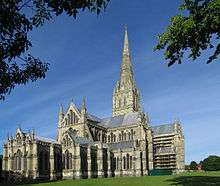 |
40,302 (2011)[34] |
| Sheffield3 | 1893 | not applicable | Local government district (Metropolitan borough) |
Yorkshire and the Humber, England |  |
552,698 (2011)[19] |
| Southampton1 | 1964 | not applicable | Local government district (Unitary) |
South East, England | |
236,882 (2011)[19] |
| Stirling (Scots: Stirlin) (Scottish Gaelic: Sruighlea) |
2002 | not applicable | none | Scotland | Dec2005.jpg) |
34,79038 |
| Stoke-on-Trent3 | 192528 | not applicable | Local government district (Unitary) |
West Midlands, England |  |
249,008 (2011)[19] |
| Sunderland18 | 1992 | not applicable | Local government district (Metropolitan borough) |
North East, England |  |
275,506 (2011)[19] |
| Swansea9 (Abertawe) |
196923 | not applicable | Local government district | Wales |  |
239,023 (2011)[19] |
| Truro1 (Truru) |
1877 | Cathedral Church of St Mary |
Civil parish | South West, England |  |
18,766 (2011)[35] |
| Wakefield3 | 1888 | Cathedral Church of All Saints |
Local government district (Metropolitan borough) |
Yorkshire and the Humber, England |  |
325,837 (2011)[19] |
| Wells1 | time immemorial | Cathedral Church of St Andrew |
Civil parish | South West, England |  |
10,536 (2011)[36] |
| City of Westminster21 | 1540 | Collegiate Church of St Peter (Westminster Abbey4) |
Local government district (London borough) |
London |  |
219,396 (2011)[19] |
| Winchester1 | time immemorial | Cathedral Church of the Holy Trinity |
Local government district (Non-metropolitan borough) |
South East, England | |
116,595 (2011)[19] |
| Wolverhampton16 | 2000 | not applicable | Local government district (Metropolitan borough) |
West Midlands, England |  |
249,470 (2011)[19] |
| Worcester3 | time immemorial | Cathedral Church of Christ & St Mary |
Local government district | West Midlands, England |  |
98,768 (2011)[19] |
| York18 | time immemorial | Cathedral & Metropolitical Church of St Peter |
Local government district (Unitary) |
Yorkshire and the Humber, England |  |
198,051 (2011)[19] |
Map of the cities
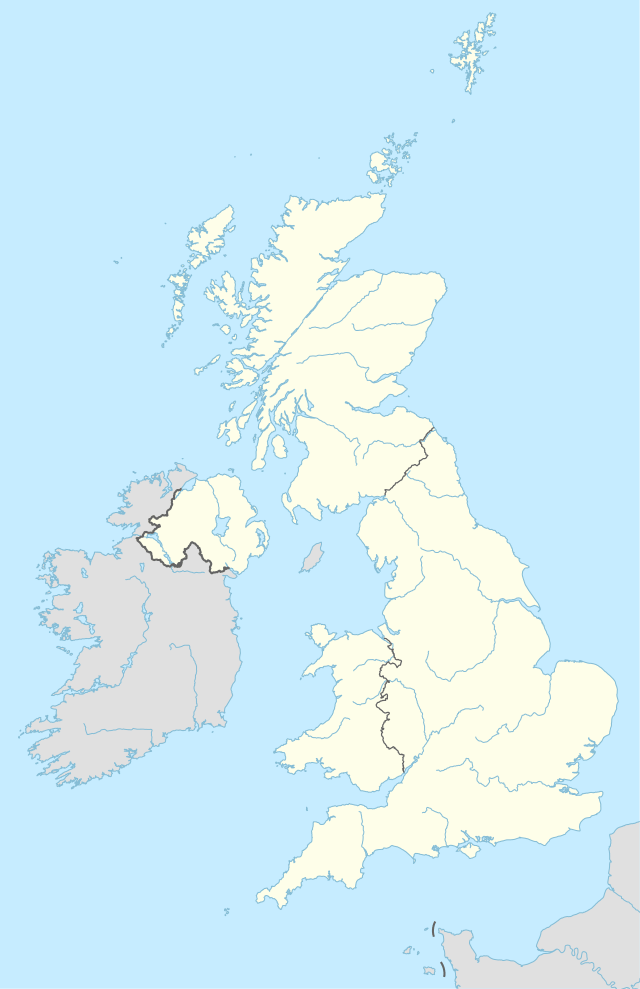
British Overseas Territories
There are a number of cities in the British Overseas Territories, such as the City of James Town on Saint Helena.[37] These are however not part of the United Kingdom.
See also
- City status in the United Kingdom
- List of lord mayoralties and lord provostships in the United Kingdom
- List of towns in the United Kingdom
- List of urban areas in the United Kingdom
- List of cities in Ireland
- List of smallest cities in the United Kingdom
- List of cities and towns in the United Kingdom by population
Notes
- ^‡ The status bearers of these cities changed on 1 April 2009 due to local government reforms. Salisbury became a civil parish, while charter trustees were formed for the former district council areas of Chester and Durham in the new unitary authorities of Cheshire West and Chester and County Durham respectively.[38][39]
|
|
References
- 1 2 3 Department for Media, Culture, & Sport. "Civic Honours Competition: UK Cities". The National Archives of the United Kingdom (London), 18 January 2011. Accessed 21 December 2014.
- 1 2 3 Beckett (2005).
- ↑ De Excidio Britanniae, §3. (Latin) Cited in the "Civitas" entry of Celtic Culture.[4]
- ↑ "JTK". "Civitas" in Celtic Culture: A Historical Encyclopedia, Vol. I, p. 451. ABC-CLIO (Sta. Barbara), 2006.
- ↑ Nennius (attrib.). Theodor Mommsen (ed.). Historia Brittonum, VI. Composed after AD 830. (Latin) Hosted at Latin Wikisource.
- ↑ The 11th edition of the Encyclopædia Britannica, for instance, listed St Asaph and Southwell as cities on the basis of their cathedrals despite their lack of charters or, in Southwell's case, local government.[7]
- ↑ Encyclopædia Britannica, 11th ed. 1911.
- ↑ Beckett (2005), p. 22.
- ↑ "ASA Adjudication on Medway Council". Asa.org.uk. 16 March 2011. Retrieved 9 June 2016.
- ↑ Kingdoms of England and Scotland. "Act of Union", §XXI. 16 January 1707.
- 1 2 3 4 Beckett, J.V. City Status in the British Isles, 1830-2002, pp. 16 ff. Ashgate Publishing, 2005.
- ↑ Clark, M. Lynda & al. "Committee on Privileges Second Report", Appendix 3, ss58. Parliament of the United Kingdom (London), 1999.
- 1 2 3 "Usual Resident Population: KS101NI (administrative geographies)". Census 2011. Northern Ireland Statistics and Research Agency. Retrieved 4 October 2013.
- ↑ Office for National Statistics 2011 census - Bangor C
- ↑ "Bath". BANES 2011 Census Ward Profiles. Retrieved 13 March 2015. (Combined populations of the 16 wards that make-up the city.)
- 1 2 "Mid 2010 Urban Area Estimates England and Wales". Office for National Statistics. 4 September 2012. Retrieved 7 April 2014.
- ↑ "Usual Resident Population: KS101NI (administrative geographies)". Census 2011. Northern Ireland Statistics and Research Agency. Retrieved 13 June 2015.
- ↑ "UK Population Estimates". (ONS). Retrieved 28 June 2014
- 1 2 3 4 5 6 7 8 9 10 11 12 13 14 15 16 17 18 19 20 21 22 23 24 25 26 27 28 29 30 31 32 33 34 35 36 37 38 39 40 41 42 "2011 Census: KS101EW Usual resident population, local authorities in England and Wales". Office for National Statistics. Retrieved 8 January 2013.
- ↑ Office for National Statistics 2011 census - Chichester CP
- ↑ City commemorates the 400th Anniversary of the City’s first charter, Derry City Council press release dated 7 July 2004, (accessed 15 December 2007)
- ↑ City status extends to the area of the former District of Durham "Charter trust and Mayor for Durham City". Durham County Council. Retrieved 2 February 2013. "2011 Census Statistical Profile". Durham County Council. Retrieved 2 February 2013.
- ↑ Office for National Statistics 2011 census - Ely (Cambs) CP
- ↑ "2011 Census: Usual resident population estimates by broad age group for Wards & Market Towns in Herefordshire". Herefordshire Council. Retrieved 8 January 2013.
- ↑ From NRS 2010 mid-year estimates, population of Inverness including Culloden - "Highland Profile". Highland Council. Retrieved 9 March 2012.
- ↑ Office for National Statistics 2011 census - Lichfield CP
- ↑ NISRA
- ↑ Letters Patent dated 21 May 2012 "News: The National Records of Scotland seals Perth's city status". National Archives of Scotland. 6 July 2012. "'We really feel part of history being made' — Letters Patent makes Perth's city status official". The Courier. 5 July 2012. Retrieved 5 July 2012.
- ↑ Created a royal burgh at some point under King David I (1124–53) although the earliest surviving charters date to 1209 or 1210; the status was abolished in 1975.[11][30]
- ↑ A A M Duncan (24 March 1973). "Perth. The First Century of the Burgh" (PDF). Transactions of the Perthshire Society of Natural Science.
- ↑ Office for National Statistics 2011 census - Ripon CP
- ↑ Office for National Statistics 2011 census - St. Asaph C
- ↑ Office for National Statistics 2011 census - St. David's and the Cathedral Close C
- ↑ Office for National Statistics 2011 census - Salisbury CP
- ↑ Office for National Statistics 2011 census - Truro CP
- ↑ "Wells CP - Usual Resident Population, 2011". Neighbourhood Statistics. Office for National Statistics. Retrieved 24 December 2014.
- ↑ The Government of the United Kingdom. "The St Helena, Ascension, and Tristan da Cunha Constitution Order 2009". The National Archives of the United Kingdom (London), 2009.
- ↑ "Local Government (Structural Changes) (Miscellaneous Amendments and Other Provision) Order 2009". Tow. Office of Public Sector Information. 2009. Retrieved 27 February 2009.
- ↑ "New Parish Council for the City of Salisbury". Towards One Council. Wiltshire County Council. Retrieved 27 February 2009.
- ↑ The London Gazette: no. 46255. p. 4400. 4 April 1974. Retrieved 18 April 2008.
- ↑ The London Gazette: no. 46303. pp. 6485–6486. 28 June 1974. Retrieved 18 April 2008.
- ↑ The London Gazette: no. 46334. p. 7419. 31 May 1974. Retrieved 18 April 2008.
- ↑ The London Gazette: no. 46352. p. 7920. 24 September 1974. Retrieved 18 April 2008.
- 1 2 The London Gazette: no. 54363. p. 4925. 4 April 1996. Retrieved 18 April 2008.
- ↑ The London Gazette: no. 46522. p. 3729. 20 March 1975. Retrieved 18 April 2008.
- ↑ The London Gazette: no. 47246. p. 7656. 14 June 1977. Retrieved 18 April 2008.
- ↑ The London Gazette: no. 56573. p. 6160. 21 May 2002. Retrieved 21 April 2008.
- 1 2 The London Gazette: no. 56109. p. 1431. 2 May 2001. Retrieved 21 April 2008.
- ↑ The London Gazette: no. 48364. p. 15451. 7 November 1980. Retrieved 21 April 2008.
- ↑ Lichfield City Council website
- ↑ The London Gazette: no. 52874. p. 5413. 26 March 1992. Retrieved 21 April 2008.
- ↑ Charters of Hereford City Council
- ↑ Samuel Lewis (ed.), Dale - St. David's, from A Topographical Dictionary of Wales (1849), accessdate=2008-05-15
- ↑ Municipal Corporations Act 1883 (c.19), S.3 and Sch II, part I
- ↑ The London Gazette: no. 53798. p. 13403. 23 September 1994. Retrieved 21 April 2008.
- ↑ The London Gazette: no. 27242. p. 6613. 30 October 1900. Retrieved 21 April 2008.
- ↑ The Times: Leicester, a City: Sequel to the Recent Royal Visit, 17 June 1919
- ↑ Civic history: The making of a City, (Leicester City Council), accessed 14 February 2008
- ↑ Leicester: The Dignity of a City 655–1926, Leicester's city status, its loss and its regaining over thirteen centuries by Daniel Williams
- ↑ The London Gazette: no. 44986. p. 12450. 12 December 1969. Retrieved 21 April 2008.
- ↑ The London Gazette: no. 33154. pp. 2776–2777. 23 April 1926. Retrieved 18 April 2008.
- ↑ London Gazette, issue no.39201, 13 April 1951
- ↑ London Gazette, issue no.34400, 21 May 1937
- ↑ London Gazette, issue no.33433, 26 October 1928
- ↑ London Gazette, issue no.33063, 3 July 1925
- ↑ The London Gazette: no. 27849. p. 7249. 31 October 1905. Retrieved 22 April 2008.
- ↑ London Gazette, 29 January 1889
- ↑ From the London Gazette, 18 January 1889, The Times, 19 January 1889
- ↑ London Gazette Issue 21426, p.950, 1 April 1853
- ↑ The London Gazette: no. 59250. p. 20329. 24 November 2009.
- ↑ The London Gazette: no. 24502. p. 5185. 11 September 1877. Retrieved 12 May 2010.
- ↑ The London Gazette: no. 60167. p. 11125. 11 June 2012.
- ↑ "Mid-2010 Population Estimates for Settlements and Localities in Scotland". General Register Office for Scotland. General Register Office for Scotland. 2012. Archived from the original on 6 July 2012. Retrieved 1 December 2012.
- ↑ Application by Derry City Council for judicial review [2007] NIQB 5 Ref WEAF5707